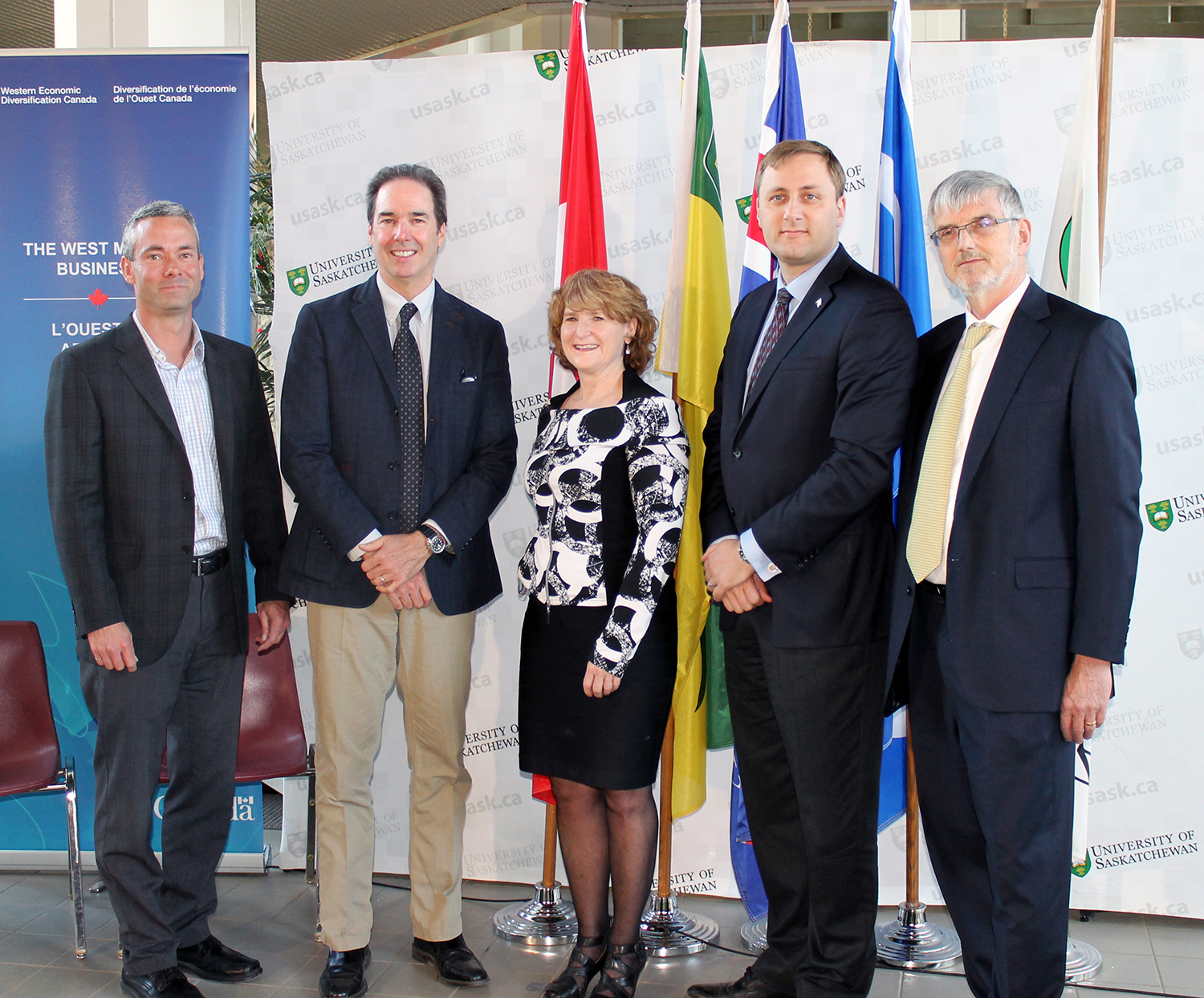
$1.8 million awarded for new mine reclamation research facility
The Global Institute for Water Security has been awarded $1.8 million by Western Economic Diversification Canada to establish a research and testing facility to develop and commercialize innovative mine waste cover systems.
U of S media release, May 21, 2015
The University of Saskatchewan (U of S) Global Institute for Water Security (GIWS) has been awarded $1.8 million by Western Economic Diversification Canada to establish a research and testing facility to develop and commercialize innovative mine waste cover systems.
Funding for the Mine Overlay Site Testing (MOST) facility was announced today by Saskatoon-Humboldt Member of Parliament Brad Trost.
“This unique new research facility will help ensure safe closure of mines so that local surface and groundwater are protected,” said Karen Chad, U of S Vice-President Research. “It’s an example of how the University of Saskatchewan works with government and industry to help protect our water resources and provide sustainable solutions to mine reclamation challenges.”
Mine covers are designed to return a site to its natural condition and isolate waste material so it does not damage the environment. The partially climate-controlled MOST facility will allow mining companies and researchers to design and test soil cover systems under varying climatic conditions before building covers on-site, saving both time and money in the design and testing phases.
“Mine closure is one of the largest costs of the mining enterprise – designing a cover system is complex and expensive and involves predicting how the cover responds to environmental elements,” said Jeffrey McDonnell, lead investigator and GIWS associate director.
Mine closure research traditionally happens on two scales: small scale, typically unrepresentative lab experiments using core sampling; and costly, complex, time-consuming large-scale constructed hillslopes out on the mine site.
“How covers behave and evolve under natural conditions, particularly those in cold regions such as Western Canada, is poorly understood and difficult to examine with current design strategies,” McDonnell said. “The primary focus of the MOST facility will be to offer our industry partners a place to test alternative designs for maximum cost and environmental effectiveness.”
The facility, located on land adjacent to the Crop Science Field Laboratory at the crossing of Preston and 108th Street in Saskatoon, is the first of its kind in the world dedicated to mine cover system research, design and testing. It is expected to be complete this fall.
The MOST facility program is a joint initiative supported by the U of S, Western Economic Diversification Canada, O’Kane Consultants, Syncrude Canada Limited and Saskatchewan Research Council, with industry funding leveraged through the Natural Sciences and Engineering Research Council of Canada.
